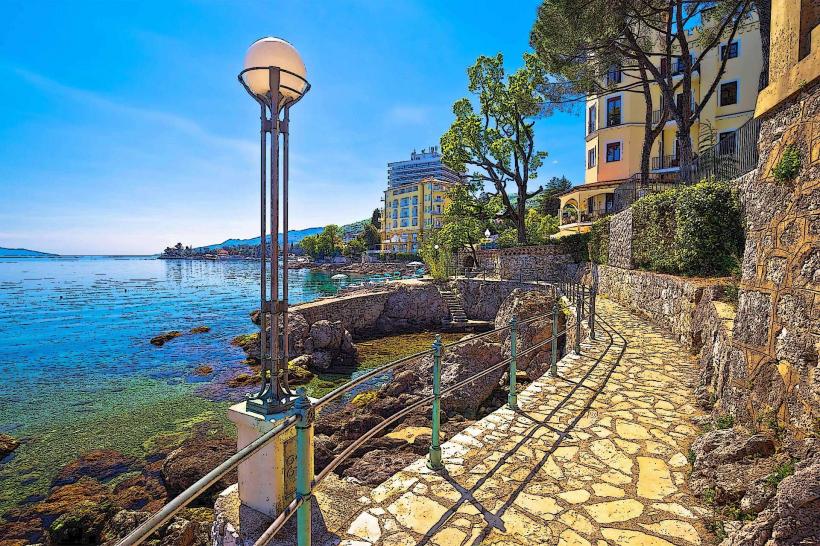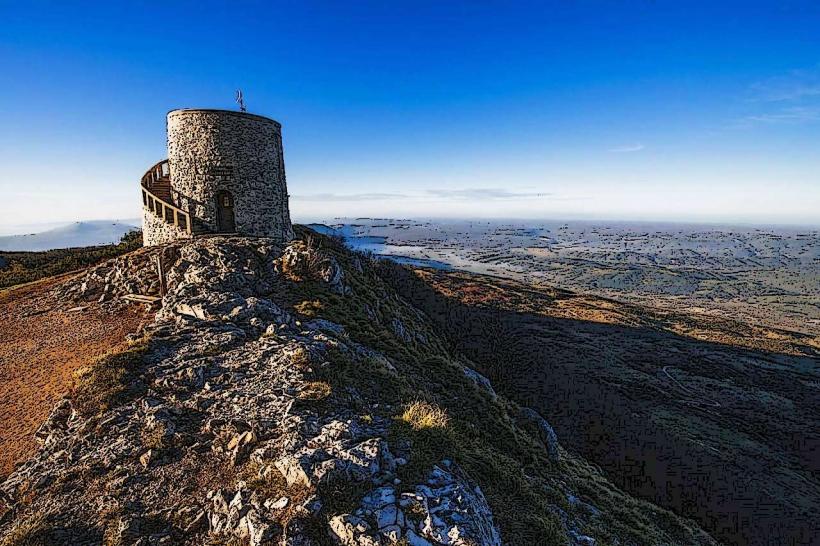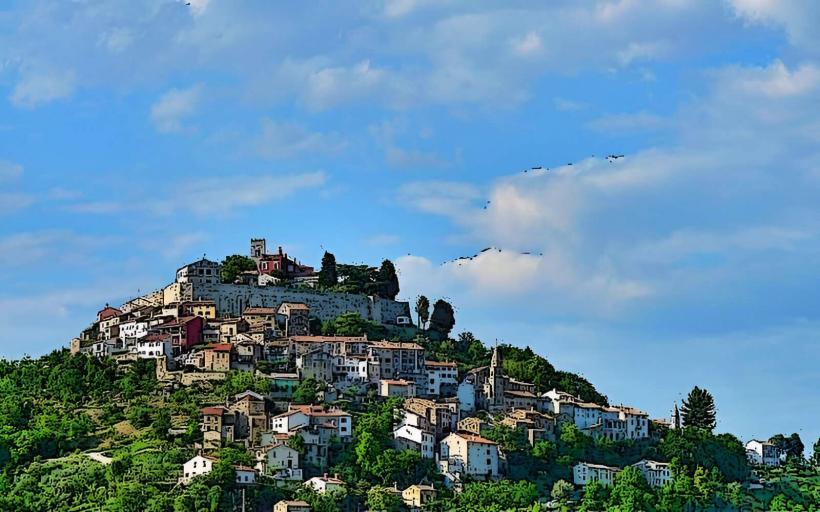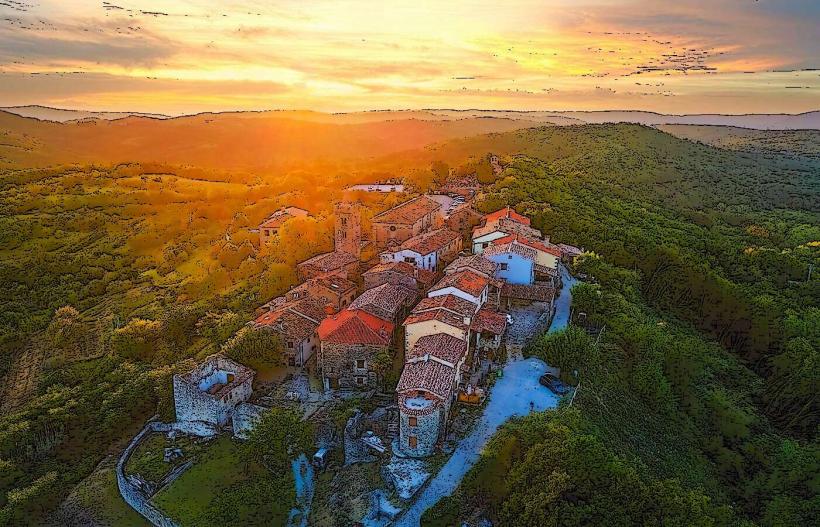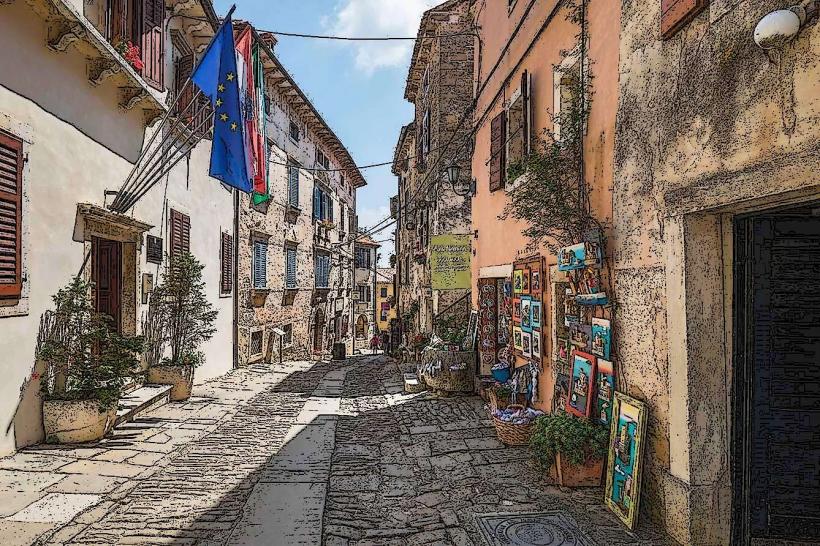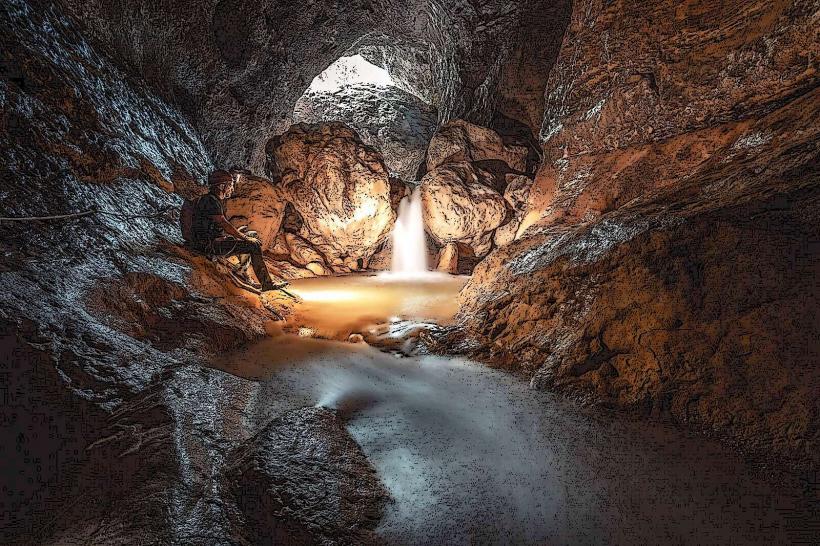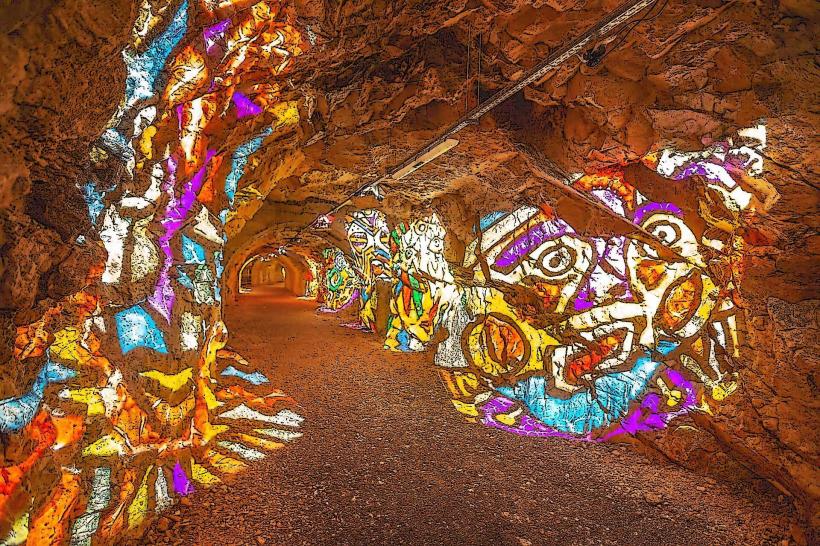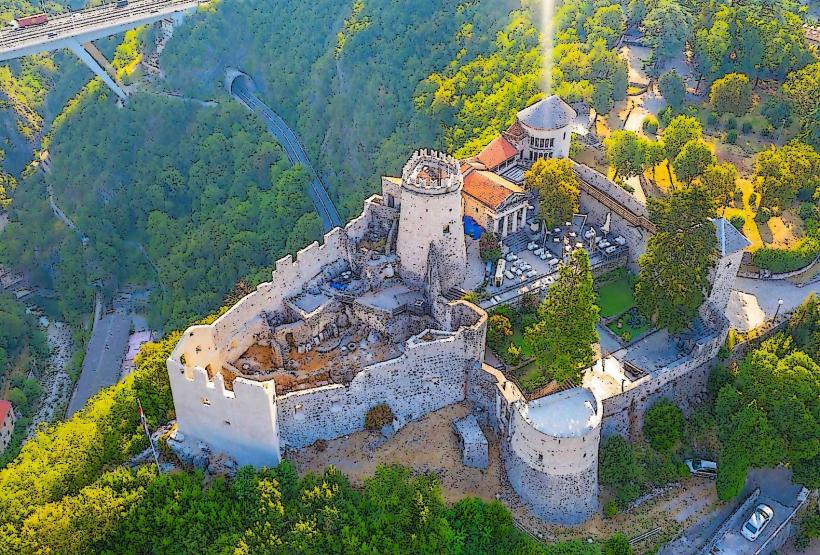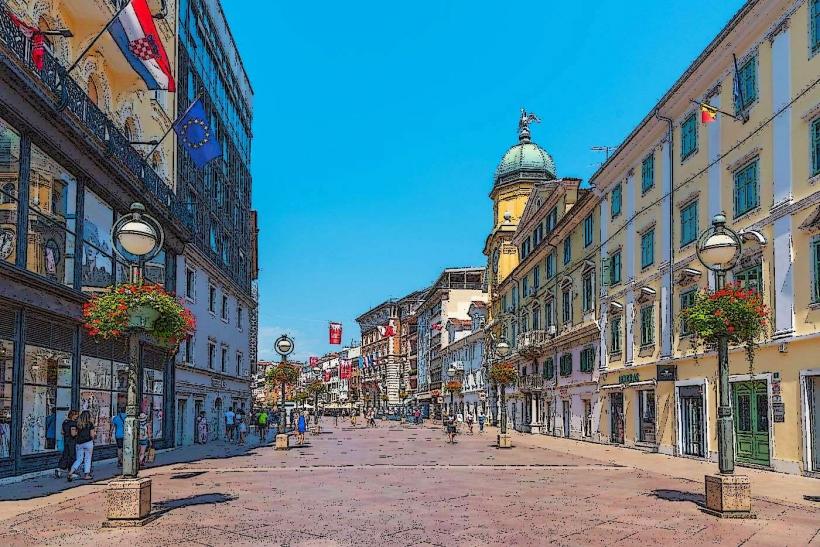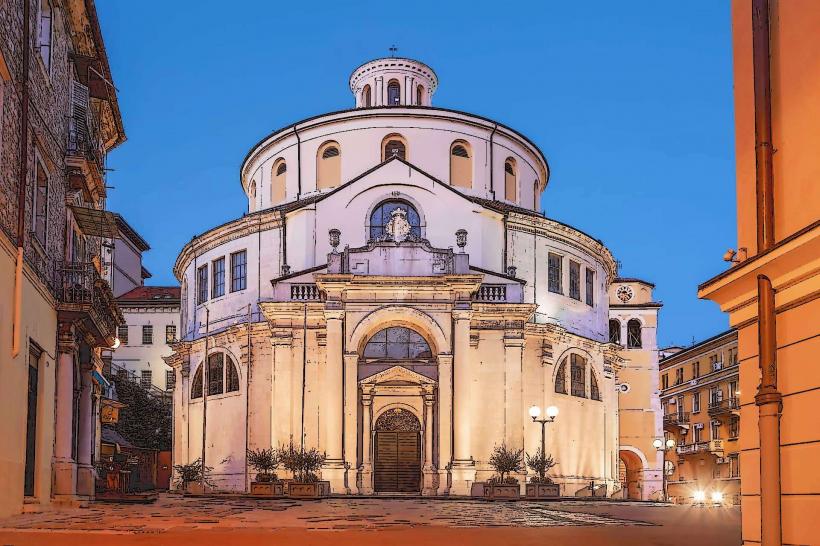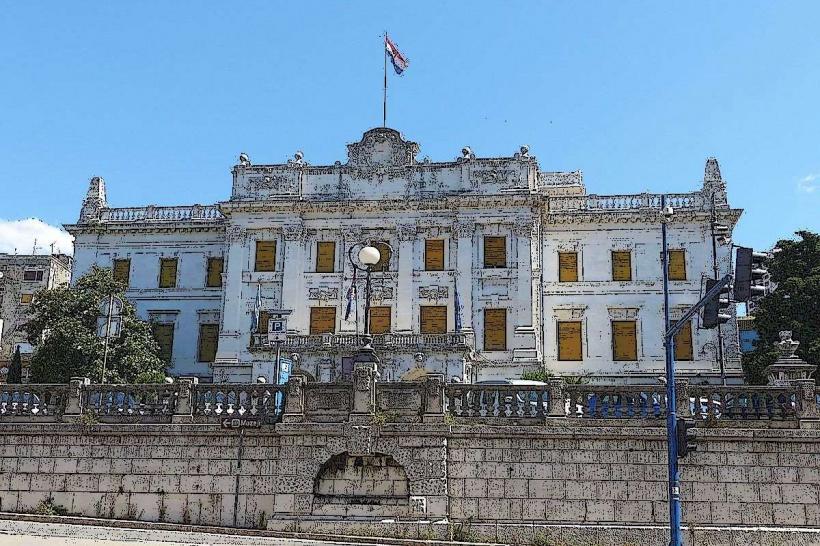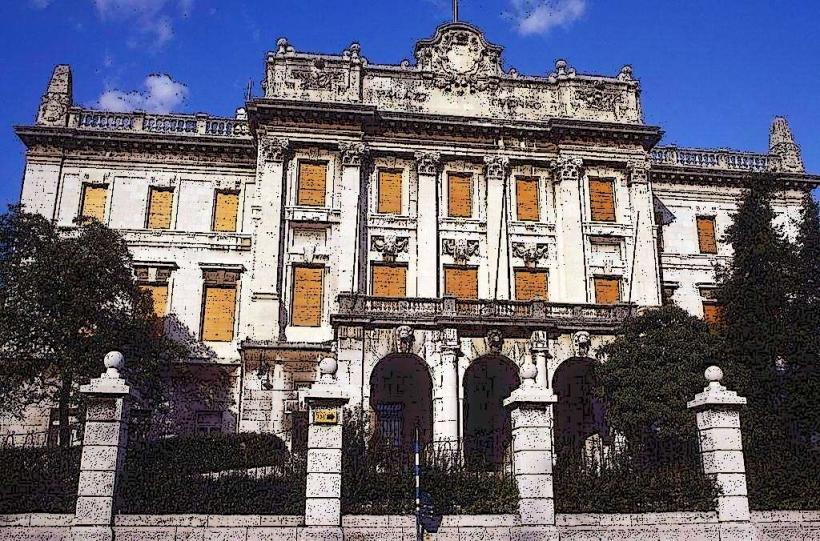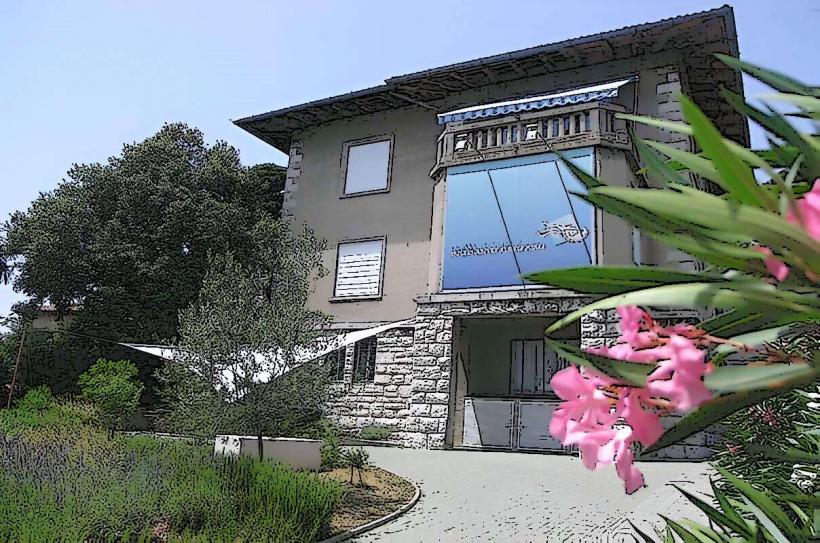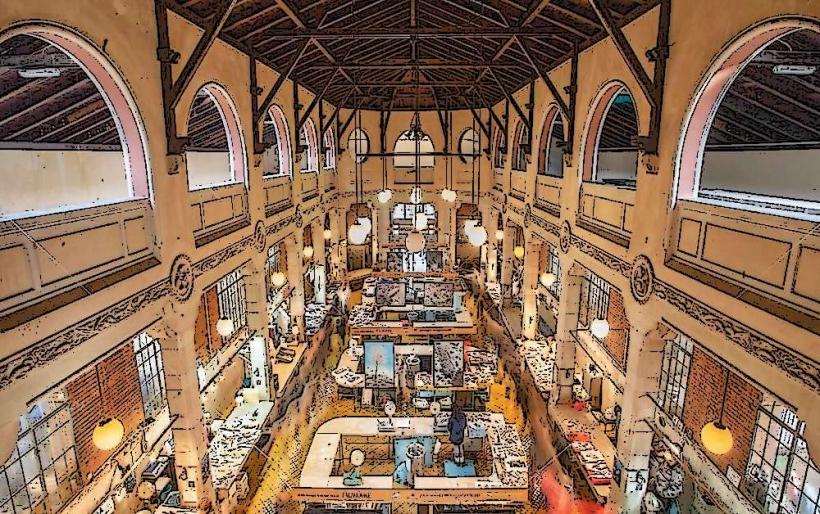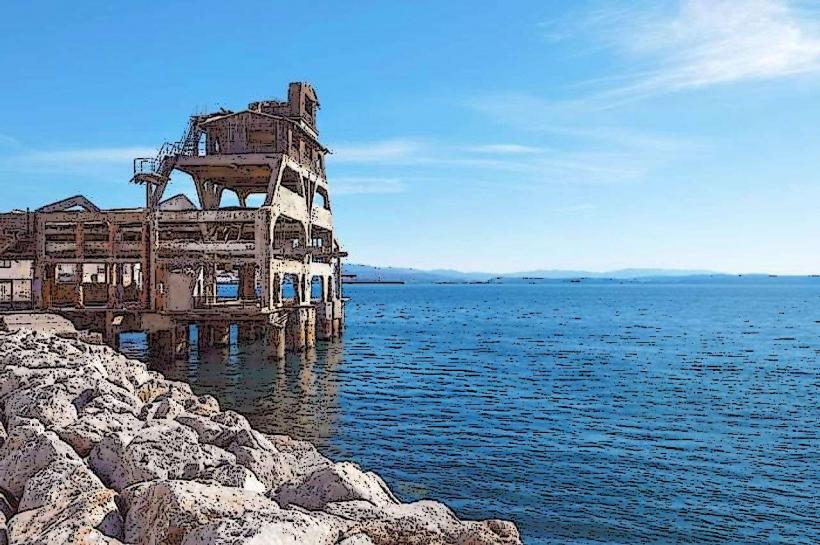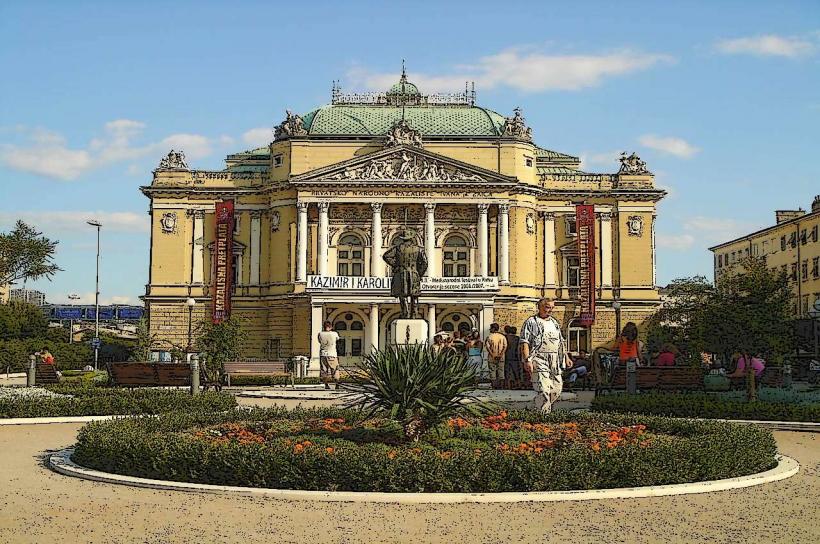Information
Landmark: Lovran Old TownCity: Rijeka
Country: Croatia
Continent: Europe
Lovran is a charming town located on the Istrian Peninsula, near Opatija, and is known for its historical significance, beautiful old town, and proximity to nature. Lovran has a rich history, with well-preserved architecture, narrow streets, and a relaxed Mediterranean atmosphere. It is often considered a quieter and less crowded alternative to the nearby tourist hub of Opatija, making it an excellent destination for those seeking a more peaceful and authentic experience.
Overview of Lovran Old Town
Lovran's old town is a maze of narrow, cobblestone streets, quaint squares, and historic buildings that tell the story of the town’s long history, which dates back to Roman times. The old town is situated on a hill, providing stunning views of the Adriatic Sea and the surrounding mountains, and retains much of its medieval charm.
Highlights of Lovran Old Town
1. Historic Architecture
The old town of Lovran is characterized by a mix of Venetian, Austrian, and medieval architectural influences. Many of the buildings in the old town have retained their original features, including:
- Stone houses with traditional red-tiled roofs
- Narrow alleyways and charming squares
- Venetian-style facades that reflect the town’s connection to the Venetian Republic during the 15th to 18th centuries
- Austrian-era villas from the late 19th and early 20th centuries, when Lovran became a popular destination for European aristocracy
2. Lovran’s Town Gates
Lovran's old town is still surrounded by remnants of its medieval fortifications. One of the most notable structures is the town gates. The St. George's Gate (also known as the Main Gate) is a beautiful example of medieval architecture, and it provides a welcoming entrance into the historical heart of the town. The town walls and defensive towers offer glimpses into Lovran’s past as a fortified settlement.
3. St. George’s Church
The Church of St. George (Crkva sv. Jurja) is one of Lovran’s most significant landmarks. Located near the town's central square, this church dates back to the 12th century and features Romanesque and Gothic architectural elements. The church is dedicated to St. George, the patron saint of Lovran, and its interior is adorned with beautiful frescoes and altars. The church's bell tower is one of the prominent features of the old town's skyline.
4. Old Town Square (Trg maršala Tita)
The main square in the old town, Trg maršala Tita, is a charming spot surrounded by historic buildings and cafés. It's a lively area, often featuring local events, markets, and performances, making it an excellent place to relax and people-watch. The square is also home to a number of shops and restaurants offering local delicacies, allowing visitors to enjoy authentic Istrian cuisine while soaking up the old town's atmosphere.
5. Lovran's Narrow Streets and Alleys
The beauty of Lovran's old town lies in its narrow, winding streets that are perfect for exploring on foot. Strolling through the maze of cobblestone lanes, visitors can admire the quaint stone houses, hidden courtyards, and colorful flowers that adorn the windows. The town's old-world charm is best experienced by wandering aimlessly through its alleys, discovering tucked-away gems along the way.
6. Venetian Loggia
The Venetian Loggia (or Town Loggia) is a significant historical building located in the central square of Lovran. Built during the period of Venetian rule, the loggia was once the site of town meetings and administrative functions. It is a lovely example of Venetian Renaissance architecture, with arches and columns that provide a picturesque spot for photos and relaxation.
7. The "Lovran" Style of Architecture
Lovran is known for its distinctive architectural style, which blends elements of Mediterranean and Austrian influences. This is especially evident in the town's historic villas, which were built during the 19th and early 20th centuries when Lovran became a fashionable seaside resort for the European elite. These villas, often with ornate balconies, sprawling gardens, and large windows, add an elegant touch to the old town.
8. Lovran’s Cultural Heritage
Lovran is proud of its cultural heritage, which is showcased in the town's numerous events, exhibitions, and local festivals. The town hosts a variety of cultural activities throughout the year, including concerts, theater performances, and local art exhibitions, often taking place in the town’s cultural center or historic buildings.
9. Walks and Views
From the old town of Lovran, visitors can enjoy panoramic views of the Kvarner Bay and the surrounding Učka Mountain range. The town is also an excellent starting point for nature walks, particularly the scenic Lungomare promenade that stretches along the coast. The promenade connects Lovran with Opatija, offering a beautiful route for walking or cycling, with stops for swimming along the way.
10. The Lovran Olive Oil Tradition
Lovran has a long tradition of olive cultivation, and visitors can learn about the town’s olive oil heritage. The town is home to several olive oil producers where you can sample and purchase locally-produced olive oils. The region’s rich olive-growing history can also be explored at the town's museums and cultural centers.
Practical Information for Visitors
Accessibility: Lovran’s old town is pedestrian-friendly, with cobblestone streets that may be difficult for those with limited mobility to navigate. However, the area is small, and most of the attractions are within walking distance from each other.
Best Time to Visit: The best time to visit Lovran is during the spring and early autumn, when the weather is pleasant, and the town is not as crowded as during the peak summer months. The warm Mediterranean climate makes it an ideal destination for outdoor exploration.
Parking: There are parking areas near the old town, but parking can be limited during the high season. It’s recommended to park in the designated parking lots located just outside the historical center and walk into the town.
Dining: Lovran offers a range of dining options, from traditional Istrian taverns serving local specialties like truffle dishes and seafood to more modern restaurants and cafés. Many of these establishments are located within the old town and offer outdoor seating, perfect for enjoying a meal while soaking up the atmosphere.
Conclusion
Lovran’s Old Town is a hidden gem along the Istrian coast, offering visitors a blend of rich history, scenic views, and traditional charm. With its medieval streets, historic churches, and picturesque squares, the old town is a peaceful place to explore on foot. Whether you're interested in its historical landmarks, enjoying the natural beauty surrounding it, or simply relaxing in one of its cafés, Lovran offers a unique and delightful experience.

